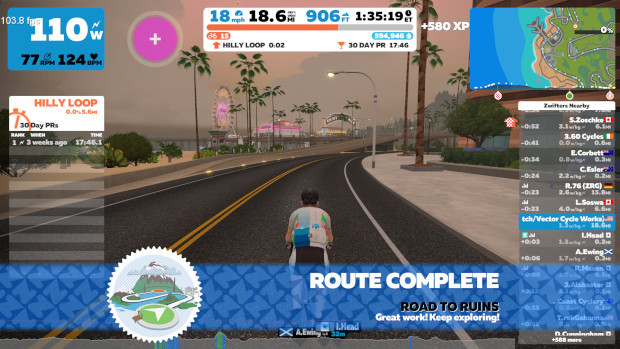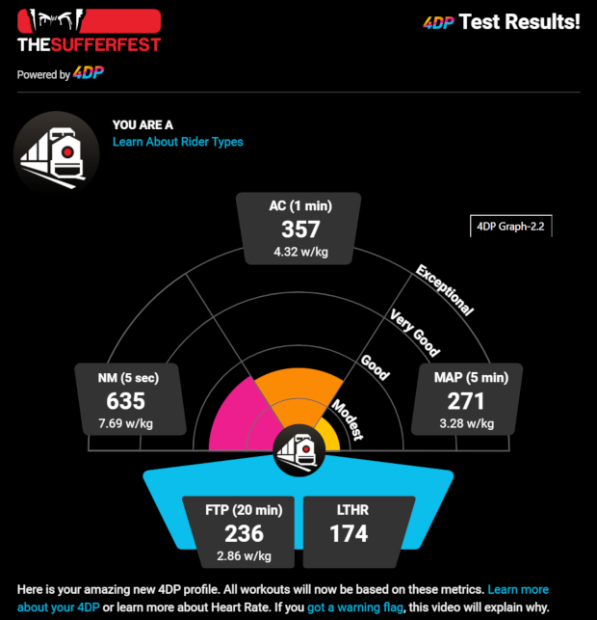SMART Indoor Training: Setting Goals (Your “A” Race)

One of the main problems with the fitness goals that we set for ourselves is that they aren’t goals at all – they are good intentions, but they lack the necessary definition to be real goals. We can define real goals using SMART goal setting.
SMART stands for “Specific”, “Measurable”, “Attainable”, “Realistic”, and “Timely”. We recently introduced our SMART Indoor Training series of articles, where we’re exploring the ways that modern indoor training applications can be used to support your efforts to attain your goals. Indoor training provides a powerful toolset for any athlete looking to set goals and measure their progress. We started with a discussion specific to the “Measurable” component of SMART. Measurement is fundamental to all aspects of monitoring our progress towards attaining our goals. Without measurement, we can’t define success. We also can’t define success if we don’t have a goal to achieve in the first place, so that’s what we’re going to discuss in this installment.
The Road to Hell is Paved with Good Intentions
If someone were to ask you what your goal is, how would you answer? As an endurance athlete, you might respond with an upcoming race or event. You might even refer to it as your “A” race.
After a bike accident in 2016, I had completely failed at setting any kind of fitness goals. There hasn’t been an “A” race. In late December, I wanted to change that and started jotting down some ideas. Buried in a whiteboard full of goals as a dad, husband, homeowner, business owner, employee, and person with too many interests and not enough time, were a few rough fitness goals:
- Lose weight
- Improve body composition
- Ride a bike every day
- Ride all of the routes in Zwift
- Win an indoor race
- Do yoga again
- Not hurt as much
- Do a metric century in another state
In their rough form, these seemingly random musings need a lot of work to be more than just good intentions. They certainly don’t come close to meeting the SMART goal setting principles. Nonetheless, the purpose of the exercise was to throw down ideas – good intentions – so we have something to transform into real goals. We can use the SMART principles to do this.
Specific
If we look at a couple of my goals, they aren’t especially specific. For example, “lose weight” or “improve body composition”. Losing weight is a common New Year’s resolution that often fails because it lacks specificity. Improving body composition complements weight loss, so we have two good intentions that can shape up to form a more realistic goal. But, we still need to ask more specific questions. How much weight? How did we arrive at our specified target weight? What is the time frame?
An “A” race is a good example of being specific – an event, that is of a certain length, on a certain date. Now we’re talking! Whether it’s a local Sprint, an Ironman, or a gravel ride, the specific nature of an event inherently provides many of the specifics we need and gives us a lot that helps us maintain a contract with ourselves. For example, the act of paying for an event or making the travel arrangements helps us hold ourselves accountable.
The goals I had jotted down on the whiteboard are way too vague to be meaningful on their own, but they could be refined using SMART principles. We can also look at these goals and start to flag any that might not work, or at least should be a lower priority. For example, losing weight can be difficult for someone training for a metric century because of the energy needs of training for such an event. So, maybe that “lose weight” goal needs to be adjusted – either by putting a specific number on it (which could be zero, if that’s most practical), or the priority can be dropped – let what happens happen, as long as we’re safely losing weight without impacting our race training.
Measureable
We talked about measurement in our last installment, and we need to look at each goal and understand how we can apply measurements to them. A metric century has a built-in measurement, but it’s only one of many. A metric century goal means more when we can add another metric to it – perhaps we want to do that metric century in 4 hours or less. If we want to lose weight, we can set a goal – maybe it’s 10 pounds. Once again, that’s a single number, but perhaps it’s 10 pounds over 10 weeks. Every goal needs metrics, or otherwise they are just good intentions.
Attainable
Indoor training provides tools to help us understand how attainable our goals actually are. Can
In my brainstorming activity, I included “win an indoor race.” The trick with this one is that what defines an attainable race win has a lot of variables. What kind of race is it? Who else is at the start line? You might know who the competition is in your local triathlon scene, but what about a worldwide virtual race scene? Factoring in what is out of your control and focusing on what you can control will help make your goals more attainable.
Realistic
It’s easy to mix the concepts of “attainable” and “realistic”, but all of the SMART principles play off each other nicely. For a goal to be realistic, we need to have an honest look at ourselves – our selected goals in relation to our lifestyle, other goals we’ve set, or in consideration of alternate goals. Attainable suggests that someone can do it, but realistic means that you can do it. Don’t compare yourself to others, and don’t let others’ goals throw yours off.
I don’t know how many times I’ve heard the phrase, “I just do sprint triathlons – I’m not an Ironman or anything like that” from customers. There isn’t a “just do” sprints – it’s an amazing feat of its own, and when we consider everything else in our lives – family, work, other social obligations, hobbies, etc. – to get out there and hammer out a sprint can be a realistic and very satisfying primary goal.
Timely
TIming is everything, and for goal setting, it’s an important factor on multiple levels. A goal can be untimely if it’s too soon and you’re not ready, or it could be untimely if it’s too far out in the future to be practical. Of course, it also has to fit into your overall schedule, not only in terms of a race season, but in terms of how your race season fits the rest of your life.
Time can be on our side, if we manage it wisely. If our “A” race is months out, there is a lot of value in using small, intermediate goals to help us get there. Whether you are motivated by having some “B” races spaced out on the calendar prior to the “A” race, or even go workout to workout, we can use the calendar to our advantage. Giving yourself smaller weekly or monthly goals and rewards will make the journey more manageable and enjoyable.
Do Your Goals Scare You? Make them SMART.
As you can see, the SMART goal-setting principles all work together and play off one another – it’s hard for something to be attainable if it’s not timely, and it’s hard for something to be specific if we don’t determine how we can measure it, and so on. Once you’ve looped through all of these principles a few times for each goal, and again through these through your collection of goals, you’ll see how the goals can complement each other, potentially distract from one another, or be prioritized depending on how they fit into your current place in life and time.
I encourage you to do this goal setting activity if you haven’t already this year as you plan your season, whether it is outdoors or indoors. Make your list, write it down, make it SMART, revisit it, and hold yourself to it. Make a contract with yourself to achieve something that is meaningful to you.
The goal of this article, and this series, is to make you think a bit about where you're going and how you can get there. We love modern indoor training, and we’re going to explore more ways to leverage indoor training applications to help you keep your contract with yourself. Our upcoming installments in this SMART series will delve into how you can establish a baseline so you can know where you’re started and using training plans and other tools built into indoor training applications to help you reach your goals in the SMARTest way possible.




